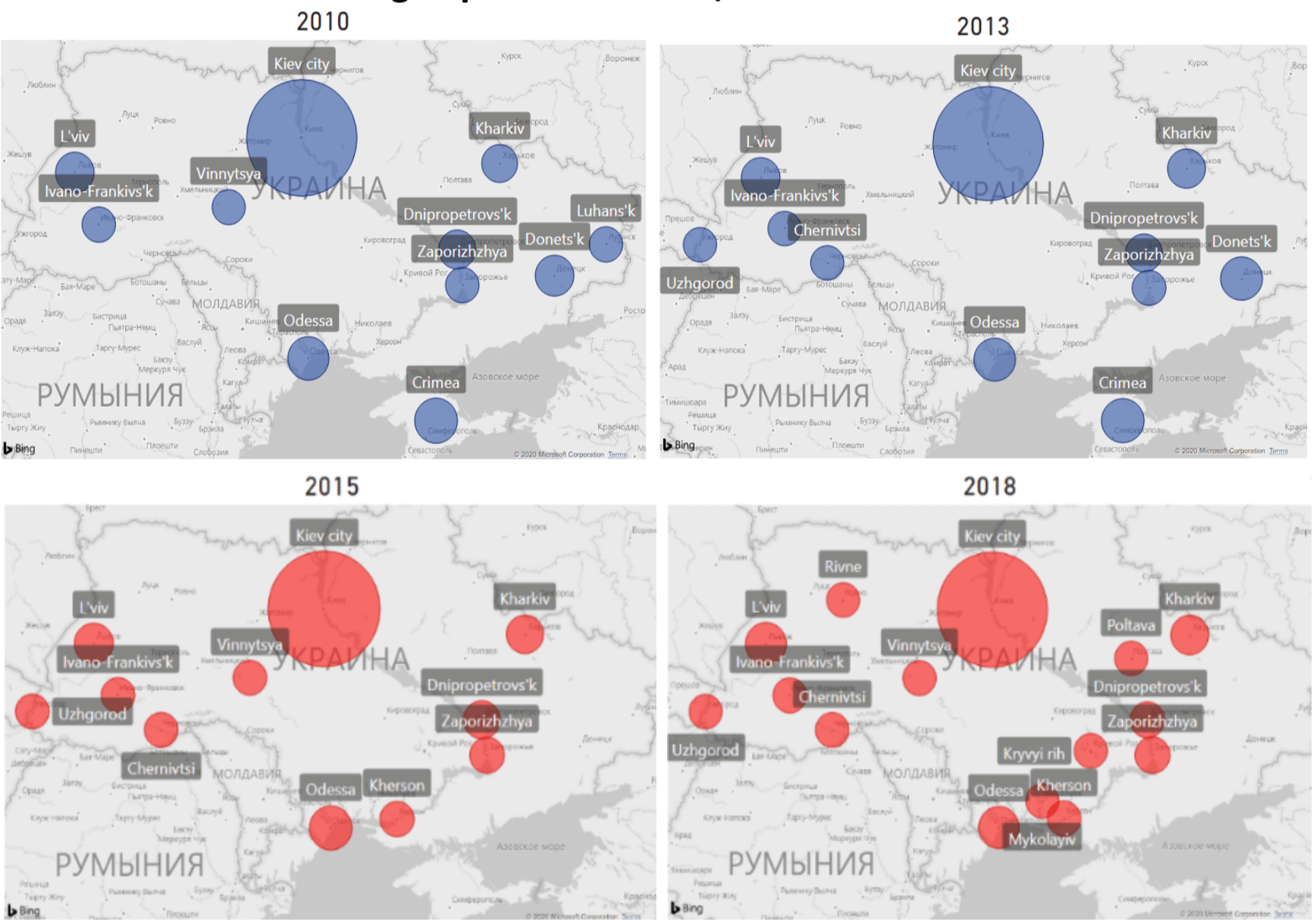The Covid-19 pandemics and subsequent related quarantine stopped the tremendous growth in the Ukrainian aviation industry that it has enjoyed for the last 5 years and put almost all Ukrainian airports to the brink of bankruptcy. Should the Government implement the bailout program and save the airports?
How have things been going in Ukrainian Aviation Industry?
Till March-2020 Ukraine demonstrated the highest growth rate of its aviation sector in Europe and one of the highest in the world. In 2019 the number of passengers that flew through Ukrainian airports exceeded 24 million, which is 18% more than a year ago. This is more than two times higher than in 2014 and 61% higher than in pre-crisis 2013 (figure 1).
Figure 1. Air-traffic in Ukraine during 2011-2019 (the number of inbound and outbound passengers passing through Ukrainian airports)

Source: State Aviation Service
The reasons for such an incredible boom are an increase in demand for air travel supported by the visa-free regime with the EU launched in the middle of 2017 and the entry of low-cost carriers into the Ukrainian market. Rising number of flights was the main driver of the development and growth of airports in Ukraine’s regions. After 2015 a lot of them got a second wind and some of them – even a second life. During 2015-2018 the number of operating airports increased from 11 to 15, and more airports are expected in the years to come. This partly compensated for the loss of airports in Donetsk, Luhansk, and Simferopol due to Russian occupation (figure 2).
Figure 2. Number of functioning airports in Ukraine, 2010-2018

All aviation analytics predicted the prosperous future for the industry with increasing competition and lower fares, but in March 2020 the situation changed dramatically. The whole industry was “down to Earth” from the air by an invisible enemy – the coronavirus which paralyzed the whole sector of air transportation in the world. Only for the first four months of 2020 the air traffic has decreased by a third, and in April its volume was close to zero. The only airport that operated at that time was Boryspil which served special flights. Against this background, almost all airport executives started to claim that without the government help they could not survive this crisis and could go bankrupt. As a result, the main task of the government now is not to invest in the development and construction of new air harbors but rather to support and maintain operating ones to prevent them from closure. Should the Government do that and spend billions of hryvnias on the rescue of these airports? The answer is not as obvious as it might seem.
Are the airports really important for the regional development?
The main difficulty in answering this question is the so-called “chicken-and-egg” problem or unclearness in which way the causality between economic development and air traffic growth is going. Does the airport activity accelerate economic growth via such channels as increased trade, improved productivity, more investments and tourists, or does the economic development increase the demand for air transportation and thus for the airport services? The causality analysis shows that the relationship between these two factors is indeed two-way, which makes causal interpretation a very challenging task.
We estimate a regression model for the whole sample of Ukrainian airports and for their two subsamples – small (Chernivtsi, Zaporizhzhya, Ivano-Frankivsk and Kherson) and large (Boryspil, Odessa, Lviv, Kharkiv and Dnipro).
Figure 3. The dynamics of GDP per capita and air-traffic

Source: State Aviation Service, World Bank
We do not find a robust relationship between air traffic and regional GDP for the entire sample. We document positive relationship between regional GDP and air traffic only for the subsample of large airports. Similar correlations are not observed for the subsample of small airports which could be due to the smaller estimation sample. For large airports, a 10% growth in air transportation is associated with a 0.33% increase in the regional GDP per capita. During the last four years the total air traffic has doubled. We can relate this to 3.3% growth in GDP per capita, which is 16.5 per cent of the actual growth of per capita GDP in considered oblasts (i.e. Kyiv, Odessa, Lviv, Kharkiv and Dnipro). Airports contribute to employment both directly and indirectly. Thus, according to the report of consulting firm Intervistas, “Economic Impact of European Airports”, the total employment of Ukrainian airports in 2015 was 15 000 people, but the total employment of all adjacent industries was almost 300 000 people.
We can imagine the relationship between air travel and regional development as a spiral – the more economic activity or tourist attractions there are in a region, the more people will travel there by air. In their turn, the easier it is to get to a city, the more people will travel there. By developing regional airports, the government may try to launch this virtuous spiral (however, the amount of investment needed to achieve some results is uncertain). Reversing this logic, closing of a regional airport may result in a gradual movement of business activity to other locations.
So, what should the government do?
Airports, as well as roads and other infrastructure, are essential for economic growth. At the same time, they require large investment which can not easily be transferred to another place. The problem of ‘white elephants’ or ‘bridges to nowhere’ is well-known to many governments. It calls for a careful consideration of cost and potential benefits if the government is thinking of investing taxpayers’ money into highways, runways or terminals.
In the case of Ukraine, it probably makes sense to help the most developed airports survive through the coronacrisis. Boryspil, Zhuliany, Lviv, Kharkiv, Dnipro and Odessa airports generate more than 95% of total air traffic, and bankruptcy of any of them may lead to severe economic damages.
Development of small airports can be facilitated by inviting low-cost carriers to the country which often choose smaller airports for their operations. To attract more airlines, smaller airports should have more freedom in setting charges. The Government should thus liberalize the regulation of aeronautical charges (it had plans to do this). This issue is also important in view of the upcoming signing of an Open Skies agreement with the EU. At the same time, we do not recommend central government investment into small airports – at least not until the effect of the pandemics on air travel is clearly understood.
Annex. Estimation results.
Our variable of interest is log(PAX) – the logarithm of monthly airport traffic (number of passengers)



Attention
The author doesn`t work for, consult to, own shares in or receive funding from any company or organization that would benefit from this article, and have no relevant affiliations



